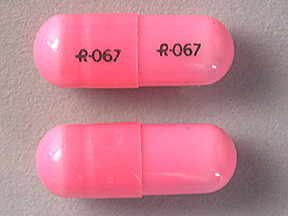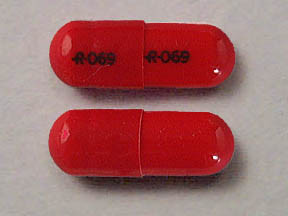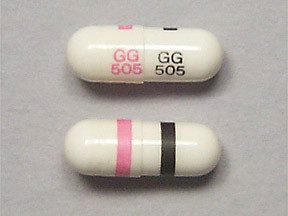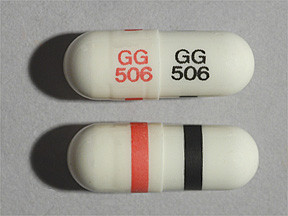OXAZEPAM - ORAL
PHONETIC PRONUNCIATION: (ox-AZ-eh-pam)
COMMON BRAND NAME(S): Serax
GENERIC NAME(S): oxazepam
Uses
USES: Oxazepam is used to treat anxiety and also acute alcohol withdrawal. This medication belongs to a class of drugs called benzodiazepines which act on the brain and nerves (central nervous system) to produce a calming and an anti-seizure effect. It works by enhancing the effects of a certain natural substance in the body (GABA). This medication may also be used for sleep (insomnia)
How to use OXAZEPAM - ORAL
HOW TO USE: Read the Medication Guide provided by your pharmacist before you start taking oxazepam and each time you get a refill. If you have any questions, ask your doctor or pharmacist. Take this medication by mouth as directed by your doctor. The dosage is based on your medical condition, age, and response to therapy. Use this medication exactly as prescribed. Do not increase your dose, take it more frequently or use it for a longer period of time than prescribed because this drug can be habit-forming. Also, if used for an extended period of time, do not suddenly stop using this drug without your doctor's approval. Some conditions may become worse when the drug is abruptly stopped. Your dose may need to be gradually decreased to avoid side effects such as seizures. When used for an extended period, this medication may not work as well and may require different dosing. Talk with your doctor if this medication stops working well. Inform your doctor if your condition persists or worsens.
Side Effects
Precautions
Interactions
Overdose
Images

- color
- pink
- shape
- oblong
- imprint
- logo and 067, logo and 067

- color
- red
- shape
- oblong
- imprint
- logo and 069, logo and 069

- color
- maroon
- shape
- oblong
- imprint
- logo and 073, logo and 073

- color
- pink
- shape
- oblong
- imprint
- logo and 067, logo and 067

- color
- pink
- shape
- oblong
- imprint
- logo and 067, logo and 067

- color
- red
- shape
- oblong
- imprint
- logo and 069, logo and 069

- color
- red
- shape
- oblong
- imprint
- logo and 069, logo and 069
Reviews
Faq for OXAZEPAM - ORAL
Oxazepam is a prescription medication that belongs to a class of drugs known as benzodiazepines. It is used for the treatment of anxiety disorders and alcohol withdrawal symptoms.
Oxazepam works by enhancing the effect of a naturally occurring chemical in the brain called gamma-aminobutyric acid (GABA). GABA helps calm excessive electrical nerve activity in the brain, resulting in a calming effect.
Common side effects of Oxazepam may include drowsiness, dizziness, blurred vision, headache, nausea, and dry mouth. These side effects usually subside as the body adjusts to the medication.
Yes, Oxazepam has the potential to be addictive if it is used for long periods or in high doses. It is important to take Oxazepam as prescribed by your healthcare provider and to avoid using it recreationally.
It is not recommended to drink alcohol while taking Oxazepam, as it can increase the drowsiness and sedation caused by the medication. Alcohol can also worsen the side effects of Oxazepam.
Oxazepam should be used with caution during pregnancy, as it may cause harm to the unborn baby. It should not be used while breastfeeding, as it can pass into breast milk and harm the nursing infant. Consult with your healthcare provider for a complete evaluation of the risks and benefits.
Oxazepam usually starts working within 30 to 60 minutes after taking the medication. However, the exact time may vary depending on individual factors such as metabolism and dosage.
While Oxazepam may help some individuals with sleep disturbances, it is not typically prescribed as a primary sleep aid. There are other medications specifically designed to treat sleep disorders that may be more suitable. Consult with your healthcare provider for appropriate treatment.
No, it is important to gradually reduce the dosage of Oxazepam under the guidance of your healthcare provider to avoid withdrawal symptoms. Abruptly stopping the medication can cause withdrawal symptoms such as anxiety, insomnia, tremors, and seizures.
Warning
WARNING: Taking oxazepam with opioid medications (such as codeine, hydrocodone) may increase your risk of very serious side effects, including death. To lower your risk, your doctor should have you take the smallest dose of oxazepam that works, and take it for the shortest possible time. Get medical help right away if any of these very serious side effects occur: slow/shallow breathing, unusual lightheadedness, severe drowsiness/dizziness, difficulty waking up.
Disclaimer
IMPORTANT: HOW TO USE THIS INFORMATION: This is a summary and does NOT have all possible information about this product. This information does not assure that this product is safe, effective, or appropriate for you. This information is not individual medical advice and does not substitute for the advice of your health care professional. Always ask your health care professional for complete information about this product and your specific health needs.


No Reviews Yet